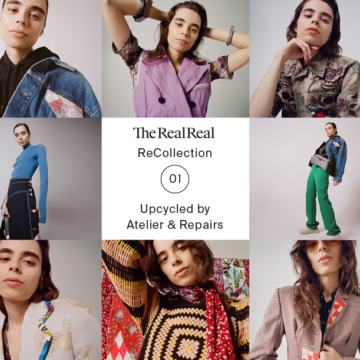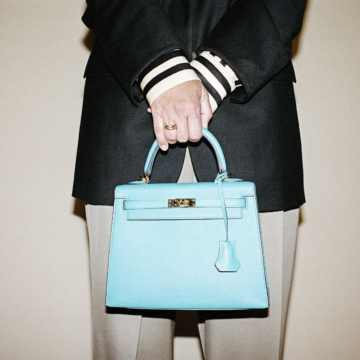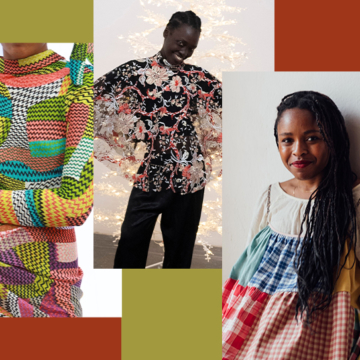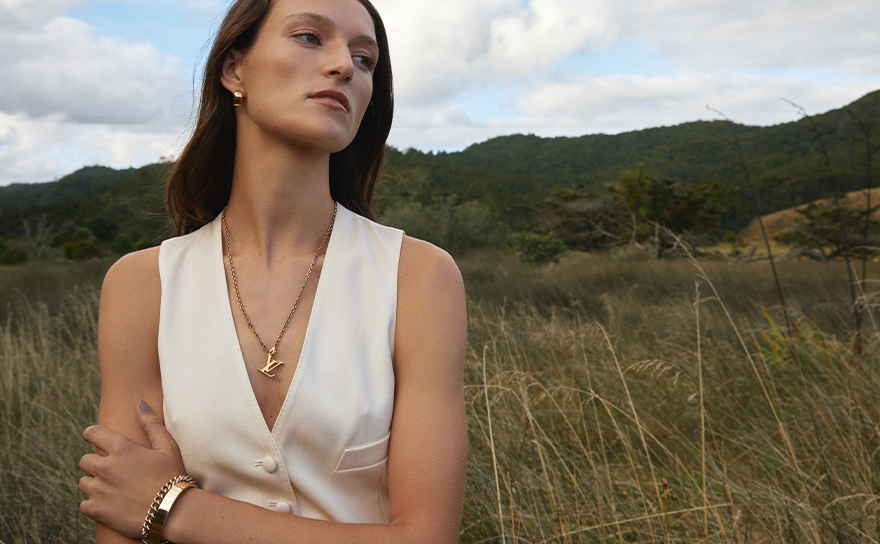
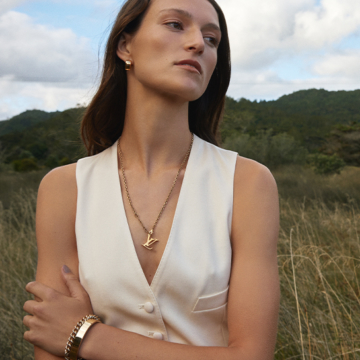
The RealReal Is Now Carbon Neutral
Earth Day 2021 is here, and with it, a big sustainability milestone for TRR — we’re now carbon neutral. How it started: In late 2019, we accepted the CEO Carbon Neutral Challenge put forth by Gucci CEO Marco Bizzarri, pledging to become carbon neutral in 2021. How it’s going: We’re now the first carbon neutral resale company, and technically, we’re a year ahead of schedule since we’re offsetting emissions as of January 1, 2020.
In a sense, it brings our work to support the circular economy, well, full circle. By now, many of us know that the fashion industry has a long way to go to improve its record as one of the world’s top polluting industries. Over the past decade, we’ve aimed to create a more sustainable future for fashion with the help of our members by keeping over 18 million luxury pieces in circulation, extending their useful lives and reducing the overproduction of new items. This has kept items out of landfills, put more than $2 billion dollars back in the hands of our consignors and saved approximately 896 million liters of water and 18,732 metric tons of carbon. If you’re looking for a way to reduce your own fashion footprint, selling with us is a great place to start. But we wanted to go beyond.
So, what does it mean to become carbon neutral and how did we do it? That’s where the pros come in. The RealReal Director of Sustainability James Rogers is part of a team that spent the last year working in collaboration with environmental experts to calculate The RealReal’s carbon footprint, and reduce and offset our emissions. Read on as he explains how it works, and check out some of the handy definitions from our Sustainability Glossary below.
First things first, what does it mean for TRR to be carbon neutral?
This means achieving net zero carbon dioxide emissions into the atmosphere by balancing carbon emissions with carbon removal or eliminating carbon dioxide emissions altogether. Being carbon neutral often includes the purchase of carbon offsets. This involves investment in projects that reduce or remove carbon emissions, like planting trees or conserving forests.
How did we measure our carbon footprint?
We collected all our energy data and also looked at anything else that might have a carbon footprint, such as our employee commuting and the emissions related to shipping products. We teamed up with leading environmental consulting firm Shift Advantage to take all that data and calculate our carbon footprint for the year.
How are we offsetting our carbon footprint? Are there specific projects we are supporting?
We worked with the Bonneville Environmental Foundation to invest in carbon offset projects for our Scope 1 (direct) and Scope 3 (indirect) emissions. We also purchased Renewable Energy Credits to reduce our Scope 2 (indirect) emissions from purchased electricity down to zero. Our renewable energy purchase comes from a wind-powered portfolio and our carbon offsets support multiple projects including forest conservation and regenerative agriculture.
What was something that you learned or that surprised you in the process of taking TRR carbon neutral?
For most apparel companies, the majority of emissions are upstream and come from their supply chain. From my previous experience in the industry, I would estimate this represents between 65-85% of the emissions for an apparel company. For The RealReal, those upstream emissions are zero because they are not counted when selling an item a second time. Those emissions have already been allocated to the brand that produced those items so we don’t want them double counted. This demonstrates how resale clearly reduces the environmental impact of apparel and is a key element in addressing climate change.
Will initiatives like the recent launch of ReCollection have an impact on reducing TRR’s carbon footprint even further?
In our work to reduce fashion’s footprint, we expanded our focus to our repair services to address the high volume of goods that can’t live on in their current state and risk being part of the garbage truck’s worth of textiles that are landfilled or burned every second. Our ReCollection program extends those efforts by transforming unusable materials into luxury pieces, innovating across categories and with some of our favorite brands. Items that are landfilled have multiple environmental impacts, including the release of greenhouse gas emissions. By upcycling products through our ReCollection program, we will keep those items out of the landfill and extend their life.
How are we working towards reducing our emissions and what are the goals TRR is committed to?
As the first resale company to join the UN Climate Change Fashion Industry Charter for Climate Action, we are committed to reducing greenhouse gas emissions by 30% by 2030, and net zero emissions by 2050. We were proud to accept Gucci President and CEO Marco Bizzarri’s CEO Carbon Neutral Challenge, and to commit to becoming carbon neutral in 2021. Technically we are hitting our goal one year early because we are offsetting emissions as of January 1, 2020. We are working towards setting Science-Based Targets through the Science-Based Target initiative. As part of those efforts, we are evaluating large-scale renewable energy power purchase agreements (often called PPAs) in order to provide enough renewable energy to cover the majority of our operational footprint.
Does TRR have plans to become carbon negative/climate positive?
This is a great question and the term I prefer to use is regenerative. The Ellen MacArthur Foundation has laid out three principles of the circular economy: regenerate natural systems, design out waste and pollution, and keep products and materials in use (for as long as possible). Our business model, including our ReCollection program, champions the latter two principles related to design and keeping products in use. We hope to influence producers in the industry (brands, designers, etc.) to adopt more regenerative materials for the items they create. The future of fashion is circular and that means it also needs to be regenerative.
TRR was one of the first brands to take up the carbon neutral challenge issued by Gucci CEO Marco Bizzarri. What are the opportunities and responsibilities of the companies leading the way in fashion, and how can brands work together to find solutions to climate change within (and outside) the industry?
There is generally an assumption that as companies grow and increase sales, their environmental footprint will grow as well. The only way to break that connection is to make products from regenerative materials and to embrace the circular economy. Buying carbon offsets is important, but it’s only one step along the journey. I think the more brands work together to scale regenerative technologies, the more we will thrive as a society. Similarly, the more brands work together and/or with partners like The RealReal to embrace the circular economy, the more everyone wins — the planet, society and the bottom line of all the companies involved. We are showing companies how resale in fact supports both their business growth and environmental preservation goals by explaining these issues and how the circular economy helps solve them. My hope is that this leadership will have a domino effect on the industry and more companies will realize it’s time to revamp the industry and stop being such polluters.
Sustainability Glossary
Carbon Neutral Definition
This means achieving net zero carbon dioxide emissions into the atmosphere by either balancing them with carbon removal or eliminating emissions altogether. Once you’re at zero, you can officially call yourself carbon neutral, like us. (Hurray!)
Carbon Offsets Definition
An action or activity that reduces emissions of carbon dioxide or other greenhouse gases e.g. planting of trees. Carbon offsets are one of the ways The RealReal became carbon neutral (yes, we’re very proud of it).
Circular Economy Definition
The aim of the circular economy is to eliminate waste and the continual use of finite resources by creating a closed-loop system through resale, reuse, repair, refurbishment, remanufacturing and recycling. Basically, all the good “r”s. That’s what we’re about at TRR.
Upcycling Definition
The process of transforming products that are beyond repair for their current use into new materials or products of even greater value or quality.
Renewable Energy Definition
This is energy collected from renewable resources which are naturally replenished. These include carbon neutral sources like sunlight, wind, rain, tides, waves, and geothermal heat.
Learn more about sustainability at TRR. Join us & reduce your fashion footprint.


